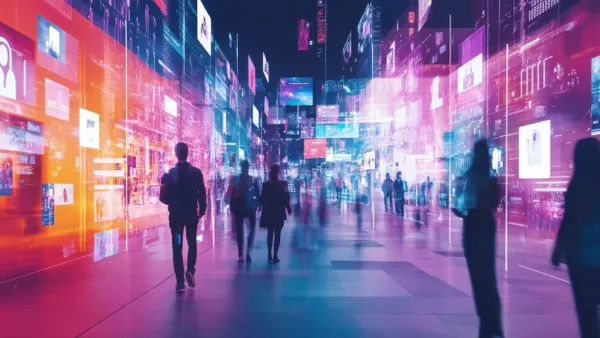The convenience of online shopping is increasingly appealing to today’s consumer. With Amazon recently announcing same-day delivery in two major cities in Canada – the pressure on brick-and-mortar retailers is stronger than ever.
Despite the rise in e-commerce sales, physical stores are still important. The last step (the sale) is still critical; and this change in the way we shop doesn’t mean stores should be less vigilant on attracting, educating, and satisfying consumers who visit.
If anything, more needs to be done for customers to get more out of visiting a store, not just the tangible benefits of a product, but a seamless experience. It’s important to merge the physical and digital worlds and be flexible to consumers when visiting your space – not just online. But where to begin?
Here are 3 steps to ensure your store is relevant and flexible enough to handle today’s consumer demands. See all the steps in the whitepaper: Five Steps Towards Reimagining the Physical Store.
1. Merge physical and digital worlds
Yes, this is already in action with the everyday-use of smartphones, websites, and online marketing. However, there is more to be done to improve customer interactions with your products and services and take advantage of those micro-moments when customers have a question answered for them with ease.
For smaller investments, there are simpler solutions such as equipping staff with mobile devices to answer stock/product questions quickly and efficiently. Success has also been seen with in-store kiosks that enable the convenience of self-shopping but also give retailers valuable insights.
“67.3% of shoppers would be satisfied if the store could arrange home delivery for an out-of-stock item.” - 2014 Motorola Solutions Shopping Study.
2. Digitally extend your shelf space
Customers are educating themselves online by reviewing sales, product options, and availability before stepping into your store. Stores can continue the experience with simple self-service kiosks that allow the customer to find what they are looking for quickly.
Zappos took this a step further by adding kiosks to smaller stores and pop-up locations to allow same-day delivery for items that were not physically stocked. Customers want that flexibility and assurance to purchase while having the added benefit of sales associate interactions and seeing a similar product in person.
3. Save sales with endless aisle
The seamless experience and accessibility to inventory that customers receive from kiosks solve the issue of losing sales and disappointing customers caused by running out of stock or failing to showcase other options (such as colors, styles, etc.).
The experience can be enhanced further with a sales associate to help guide customers through the purchase decision process. This personalized experience creates a more seamless path to purchase while giving staff the tools to quickly access needed information without interruption to the sales process.
Sales people hate having to say “no” or “let me go check”, and we agree with them.
To get the last 2 steps, download our whitepaper titled, Five Steps Towards Reimagining the Physical Store. Get the whitepaper!









